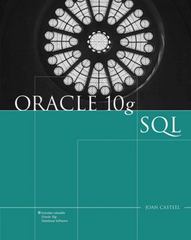Question
How to solve this question by using R Language? Download the diabetes data set (http://astro.temple.edu/~alan/DiabetesAndrews36_1.txt). Disregard the first three columns. The fourth column is the
How to solve this question by using R Language?
Download the diabetes data set (http://astro.temple.edu/~alan/DiabetesAndrews36_1.txt). Disregard the first three columns. The fourth column is the observation number, and the next five columns are the variables (glucose.area, insulin.area, SSPG, relative.weight, and fasting.plasma.glucose). The final column is the class number. Assume the population prior probabilities are estimated using the relative frequencies of the classes in the data.
(Note: this data can also be found in the MMST library)
(a) Produce pairwise scatterplots for all five variables, with different symbols or colors representing the three different classes. Do you see any evidence that the classes may have difference covariance matrices? That they may not be multivariate normal?
(b) Apply linear discriminant analysis (LDA) and quadratic discriminant analysis (QDA). How does the performance of QDA compare to that of LDA in this case?
(c) Suppose an individual has (glucose area = 0.98, insulin area =122, SSPG = 544. Relative weight = 186, fasting plasma glucose = 184). To which class does LDA assign this individual? To which class does QDA?
Step by Step Solution
There are 3 Steps involved in it
Step: 1

Get Instant Access to Expert-Tailored Solutions
See step-by-step solutions with expert insights and AI powered tools for academic success
Step: 2

Step: 3

Ace Your Homework with AI
Get the answers you need in no time with our AI-driven, step-by-step assistance
Get Started


